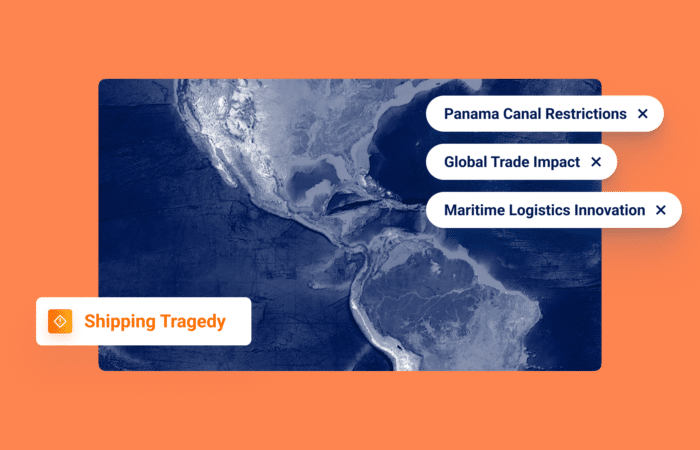What’s inside?
A joint blog post by Gilles Perez, Product Marketing Manager for Ocean Freight Visibility, Windward, with freight rate analysis by Judah Levine, Head of Research at Freightos.
Windward leveraged data from our Ocean Freight Visibility solution, alongside freight rate data from the Freightos Baltic Index, in an attempt to better understand the impact of these past few months on the flow of goods coming from China to the U.S., the effect on ocean prices, and what may be driving these changes.
Increase in China to U.S. TEUs in June?
According to Windward’s data from March-June 2022, 800 voyages were undertaken by container vessels visiting a port in China and then continuing to a U.S. port, including completed and ongoing voyages. These voyages represent a maximum capacity of four million twenty-foot equivalent units (TEUs).
A year-on-year comparison of March to June 2022 vs. those same months last year shows a drop in the number of vessels and, even more so, of TEU capacity out of China and headed to U.S. ports in June 2022 compared to both the previous month and year.
However, it’s important to note that while the analysis based on Windward’s data includes 212 container vessels that are still on their way to a U.S. port, there may be vessels that left China in June 2022 and haven’t announced a U.S. port as their next port of call. This could be because they have other ports on their schedule before getting to the U.S., or they are waiting to be a shorter distance from the port to call it. Either way, they can’t be represented in the 2022 numbers. In 2021, 12% of vessels that left China in March-June made it to U.S. ports between August and September. If the same pattern was to repeat this year, we could expect to see vessels with an additional 550,000 total TEU capacity berthing at U.S. ports in the coming weeks. This would bring the total TEU capacity for June to 1.4 million and would represent an increase of 30% in TEU capacity compared to May.
Even if only half of those vessels are still on their way to the United States, it would mark a 5% increase in June compared to May, and a 2% increase year-over-year for the entire period.
Freight Rates Continue to Fall…
Freightos Baltic Index data shows that the current spot rate of $7,326 per 40’ container on the Asia-U.S. West Coast lane is less than half the rate in the last week of April.
The TEU data above suggests that capacity was fairly stable in April and May. One driver of the 34% rate decrease over the month of May during the shutdown could have been the lack of available exports, as manufacturing and trucking were extremely constrained.
But as rates have continued to fall through June and into July – even as Shanghai has reopened and capacity may be decreasing – a drop in underlying demand was likely also a cause of falling rates in May and is the most likely culprit keeping rates declining since early June. That prices are continuing to fall while, at this time last year they were beginning their meteoric 80% peak season climb over the course of July, points to the different underlying market conditions at play.
The size of this rate drop may be amplified because many shippers already started pulling peak season orders before (or during) the shutdown. As underlying consumer demand decreased, many importers may have found themselves already carrying enough of the inventory they believe will suffice for the upcoming shopping seasons, resulting in a drop in demand for ocean freight.
A survey of SMB importers on the freightos.com marketplace in early June reflected these trends and saw more than half of respondents report they’d already placed peak season orders early in the hopes of building inventory. Two-thirds also said they were already experiencing a decrease in demand for their products, with 84% of those attributing that dip to inflation.
One thing is fairly certain – significant change is coming. Freight forwarders and beneficial cargo owners may want to consider technology that would help them stay on top of changing freight rates and obtain better ocean freight visibility.














